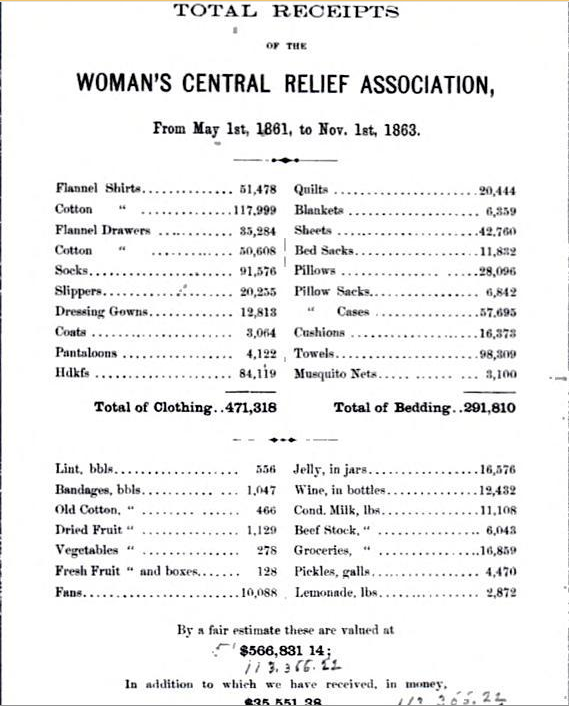It never ceases to amaze me what can happen when one idea takes root and blossoms until it has a life of its own. This is what happened when Dr. Elizabeth Blackwell, the first female to earn a medical degree in the United States, organized the volunteer efforts of women in New York City in the first few months of the Civil War.

Let's back up for a moment. When the war broke out, women across the country wanted to help. But they were sending jars of jellies that shattered and gifts of meat that spoiled before they could reach their destination. They knitted socks, but didn't know where to send them. For example, some regiments were flooded with them and others went without. Troops in Virginia could have used mosquito netting instead! What to do with all this well-intended help?
Dr. Blackwell realized the Union army needed a system for distributing supplies and organized four thousand women into the Women’s Central Association of Relief (WCAR). The WCAR grew into chapters around the county, and this body systematically collected and distributed life-saving supplies such as bandages, blankets, food, clothing and medical supplies.
Blackwell also partnered with several prominent male physicians in New York City to offer a one-month training course for 100 women who wanted to be nurses for the army. This was the first formal training for women nurses in the country. Once they completed their training, they were sent to Dorothea Dix for placement at a hospital.
By July 1861, the WCAR prompted the government to form a national version—the United States Sanitary Commission, which was the precursor to the American Red Cross. And it all started because Dr. Blackwell decided to mobilize the women of the country to help the Union.
Below is a snapshot of what the WCAR collected and distributed to soldiers from May 1, 1861 to Nov. 1, 1863. Keep in mind all of this was donated free of charge from women across the country, and they donated MORE after this until the war ended in April 1865. These numbers also don't include the donations that were made to the entire Sanitary Commission.
Source: Women Doctors and Nurses of the Civil War by Lesli J. Favor
*Dr. Blackwell plays a major role in Wedded to War. The main character of the novel, Charlotte Waverly, is inspired by the historical figure of Georgeanna Woolsey, one of the 100 nurses given the one-month of training. (One month! How do you think that served her? Find out in Wedded to War.)



Add new comment